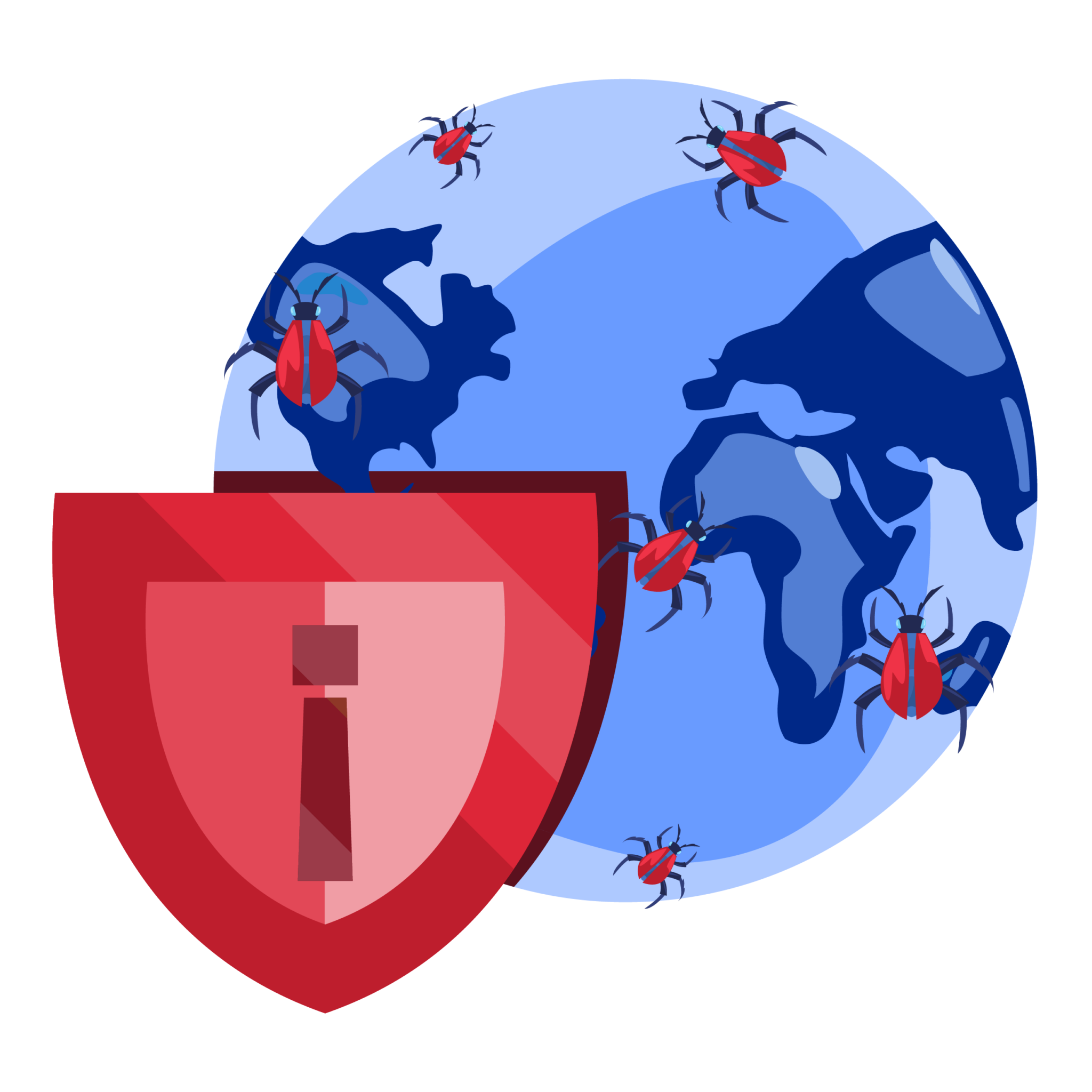Cybersecurity-as-a-Service
What We Do
Hada is a managed security platform and team providing small and medium enterprises with Cybersecurity-as-a-Service.

What is Cybersecurity-as-a-Service?
Cybersecurity as a Service (CSaaS) is a model in which organizations outsource their cybersecurity needs to a third-party provider. This is a modern spin on MSSP’s, expanding on the traditional tools of what they provide. Instead of an organization investing in in-house cybersecurity infrastructure, enterprise tools, and staff, organizations can rely on a CSaaS provider to instantly add a security team.

Hada Managed Security Services
What You Get When Working With Hada
-
Our Team Implements a security platform for threat detection & response.
-
Our Team manages day to day support of the platform
-
Our Team monitors, identifies, and responds to threats so that you don’t have to. You’ll only hear about the most critical threats that need your attention.
Security Protection With Hada
Cloud Data Protection
Cloud Data Protection
Cloud data protection is a set of security measures and practices designed to safeguard sensitive information stored in the cloud. It involves encryption, access control, and data backup to protect data from unauthorized access, data breaches, and loss. By ensuring the integrity and confidentiality of data in cloud-based environments, organizations can trust that their valuable information remains secure and available when needed while complying with data privacy regulations.
Cyber Awareness Training
Cyber Awareness Training
Cyber awareness training is an educational initiative aimed at equipping individuals, employees, and organizations with the knowledge and skills to recognize, prevent, and respond to cybersecurity threats. This training covers a wide range of topics, from identifying phishing emails and safe online behavior to secure password practices and incident reporting. By fostering a culture of cybersecurity awareness, organizations empower their workforce to become the first line of defense against cyber threats, reducing the risk of security incidents and data breaches. It’s a fundamental component of overall cybersecurity strategy, ensuring that everyone plays a role in maintaining a secure digital environment.
Email Security
Email Security
Email security encompasses a suite of measures and technologies designed to protect organizations from a wide range of email-based threats. These threats can include phishing attacks, malware, spam, and data breaches. Email security solutions typically involve elements like spam filters, encryption, authentication protocols, and content scanning to ensure that emails are both secure and free from malicious content. By implementing robust email security, organizations can fortify their communication channels, safeguard sensitive data, and prevent potentially devastating security breaches. It’s a vital component of comprehensive cybersecurity, particularly as email remains a primary vector for cyberattacks and data exfiltration.
Endpoint Protection
Endpoint Protection
Endpoint protection, also known as endpoint security, is a comprehensive approach to securing individual devices, such as computers, laptops, smartphones, and tablets, within an organization’s network. It involves the deployment of security software and policies to protect these endpoints from a wide range of cyber threats, including malware, ransomware, viruses, and unauthorized access. Endpoint protection solutions typically include antivirus and anti-malware software, firewall protection, intrusion detection and prevention systems, and data loss prevention tools. By safeguarding individual devices, organizations can strengthen their overall cybersecurity posture, reduce the risk of data breaches, and ensure that sensitive information remains protected, even in a world of evolving and sophisticated threats.
Multi-Factor-Authentication
Multi-Factor-Authentication
Multi-Factor Authentication (MFA) is a crucial security practice that adds an extra layer of protection to user accounts and systems. It requires individuals to provide two or more authentication factors, typically something they know (like a password), something they have (like a mobile device or smart card), or something they are (biometric data) before they can access an account or system. MFA significantly enhances security by mitigating the risk of unauthorized access, password breaches, and phishing attacks. It is a fundamental defense against cyber threats, offering heightened protection for sensitive data and critical systems, particularly in a world where digital security is paramount.
Phishing Simulations
Phishing Simulations
Phishing simulations are a proactive cybersecurity training technique that involves creating simulated phishing emails or messages to test and educate individuals within an organization about the dangers of real phishing attacks. These simulations aim to mimic the tactics used by cybercriminals to deceive users into clicking on malicious links, downloading malware, or divulging sensitive information. By subjecting employees to these realistic but harmless simulations, organizations can assess their vulnerability to phishing, identify areas for improvement, and provide targeted training to help staff recognize and resist phishing attempts. Phishing simulations are an invaluable tool in building a more security-conscious workforce, reducing the risk of falling victim to real phishing threats, and strengthening an organization’s overall cybersecurity posture.
Risk Assessment
Risk Assessment
A risk assessment is a systematic process of evaluating and identifying potential risks, threats, vulnerabilities, and hazards that an organization, project, or system may face.
Single Sign On
Single Sign On
Single Sign-On (SSO) is an authentication process that allows users to access multiple applications and services with a single set of credentials (typically a username and password). Instead of needing separate login credentials for each application, SSO enables users to log in once and gain access to a range of systems or services without having to repeatedly enter their login information.
Cloud Data Protection
Cloud data protection is a set of security measures and practices designed to safeguard sensitive information stored in the cloud. It involves encryption, access control, and data backup to protect data from unauthorized access, data breaches, and loss. By ensuring the integrity and confidentiality of data in cloud-based environments, organizations can trust that their valuable information remains secure and available when needed while complying with data privacy regulations.
Cyber Awareness Training
Cyber awareness training is an educational initiative aimed at equipping individuals, employees, and organizations with the knowledge and skills to recognize, prevent, and respond to cybersecurity threats. This training covers a wide range of topics, from identifying phishing emails and safe online behavior to secure password practices and incident reporting. By fostering a culture of cybersecurity awareness, organizations empower their workforce to become the first line of defense against cyber threats, reducing the risk of security incidents and data breaches. It’s a fundamental component of overall cybersecurity strategy, ensuring that everyone plays a role in maintaining a secure digital environment.
Email Security
Email security encompasses a suite of measures and technologies designed to protect organizations from a wide range of email-based threats. These threats can include phishing attacks, malware, spam, and data breaches. Email security solutions typically involve elements like spam filters, encryption, authentication protocols, and content scanning to ensure that emails are both secure and free from malicious content. By implementing robust email security, organizations can fortify their communication channels, safeguard sensitive data, and prevent potentially devastating security breaches. It’s a vital component of comprehensive cybersecurity, particularly as email remains a primary vector for cyberattacks and data exfiltration.
Endpoint Protection
Endpoint protection, also known as endpoint security, is a comprehensive approach to securing individual devices, such as computers, laptops, smartphones, and tablets, within an organization’s network. It involves the deployment of security software and policies to protect these endpoints from a wide range of cyber threats, including malware, ransomware, viruses, and unauthorized access. Endpoint protection solutions typically include antivirus and anti-malware software, firewall protection, intrusion detection and prevention systems, and data loss prevention tools. By safeguarding individual devices, organizations can strengthen their overall cybersecurity posture, reduce the risk of data breaches, and ensure that sensitive information remains protected, even in a world of evolving and sophisticated threats.
Multi-Factor-Authentication
Multi-Factor Authentication (MFA) is a crucial security practice that adds an extra layer of protection to user accounts and systems. It requires individuals to provide two or more authentication factors, typically something they know (like a password), something they have (like a mobile device or smart card), or something they are (biometric data) before they can access an account or system. MFA significantly enhances security by mitigating the risk of unauthorized access, password breaches, and phishing attacks. It is a fundamental defense against cyber threats, offering heightened protection for sensitive data and critical systems, particularly in a world where digital security is paramount.
Phishing Simulations
Phishing simulations are a proactive cybersecurity training technique that involves creating simulated phishing emails or messages to test and educate individuals within an organization about the dangers of real phishing attacks. These simulations aim to mimic the tactics used by cybercriminals to deceive users into clicking on malicious links, downloading malware, or divulging sensitive information. By subjecting employees to these realistic but harmless simulations, organizations can assess their vulnerability to phishing, identify areas for improvement, and provide targeted training to help staff recognize and resist phishing attempts. Phishing simulations are an invaluable tool in building a more security-conscious workforce, reducing the risk of falling victim to real phishing threats, and strengthening an organization’s overall cybersecurity posture.
Risk Assessment
A risk assessment is a systematic process of evaluating and identifying potential risks, threats, vulnerabilities, and hazards that an organization, project, or system may face.
Single Sign On
Single Sign-On (SSO) is an authentication process that allows users to access multiple applications and services with a single set of credentials (typically a username and password). Instead of needing separate login credentials for each application, SSO enables users to log in once and gain access to a range of systems or services without having to repeatedly enter their login information.

